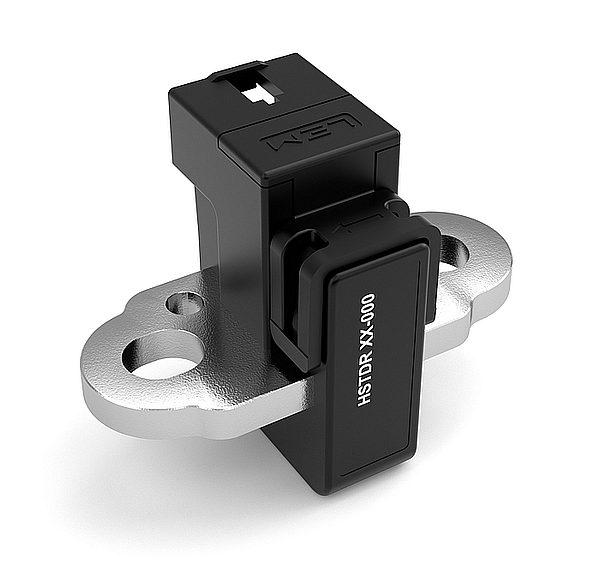- Lem is offering a more compact current sensor to enable electric vehicle (EV) traction inverter designers to optimize the size, weight and efficiency ratios of their products so that vehicles can travel more miles between recharges.
The battery autonomy of electric vehicles and the speed of their battery charge are key criteria in the electric mobility sector. And like any other vehicle component, high-power embedded traction inverters, which convert direct current into alternating current, must deliver the required performance while being as small and light as possible.
With dimensions of 29 x 21 x 12 mm and a weight of 27 g, Lem’s new HSTDR current sensor comes in a more compact package than a traditional C-core sensor. This makes it easier to integrate into inverter housings.
This sensor allows traction inverters to operate in harsh environments: operating temperature range from -40°C to +125°C and vibration resistance up to 10 G. Thanks to its open-loop Hall-effect technology and specially designed magnetic core, the HSTDR has, according to its manufacturer, excellent immunity to external fields and crosstalk, as well as excellent component-to-component consistency of phase shift as a function of frequency. This allows for more accurate torque control.
This sensor is 42% smaller than its predecessor (Lem’s HSNDR) but also 50% lighter, while offering a 50% wider measurement range, and an overall temperature error of 3.5% over its lifetime. Electric vehicle manufacturers have different current measurement ranges in the same package (from ±300 A to ±1,500 A). This sensor also ensures the galvanic separation between primary circuit (high power) and secondary circuit (electronic circuit). This is also suitable for 800 V battery systems.
Lem’s designers have minimized the footprint of the HSTDR by making it a sensor for electric vehicle traction converters, for DC link, and for three-phase current measurement, which has an integrated bar bus (like its predecessor HSNDR) that fits into the smallest possible core opening.
Access to a calibrated package of core, bar bus and sensing element gives OEMs and electric vehicle manufacturers more flexibility in product development.






